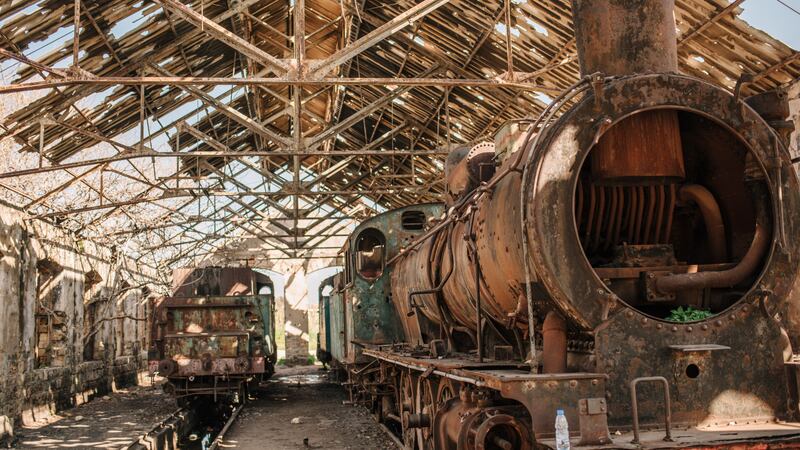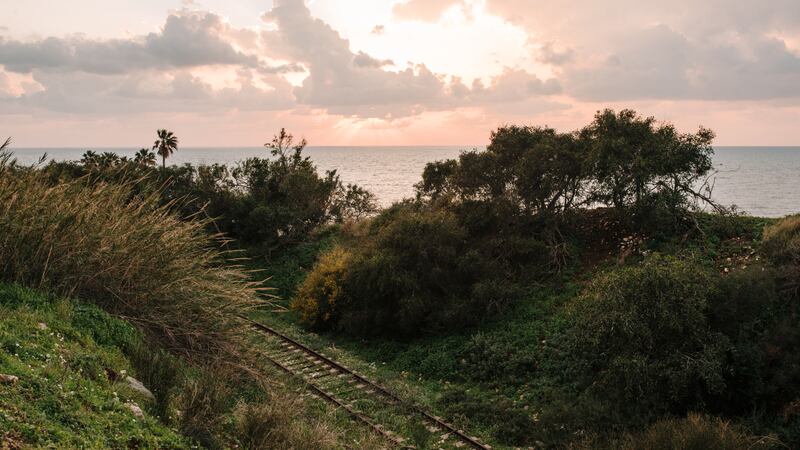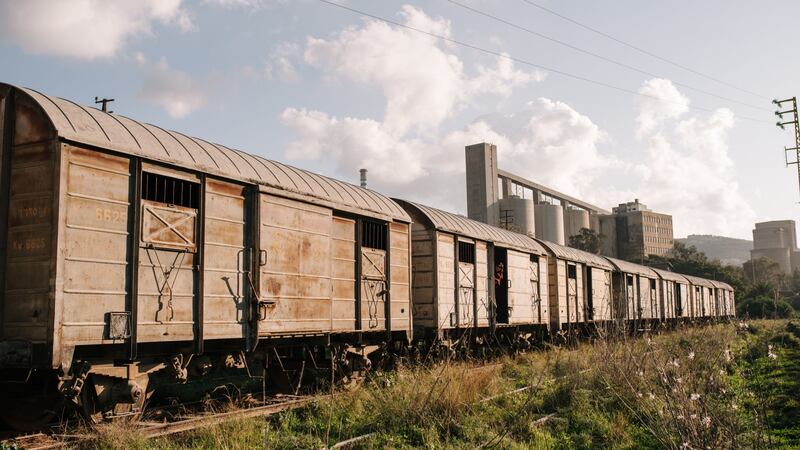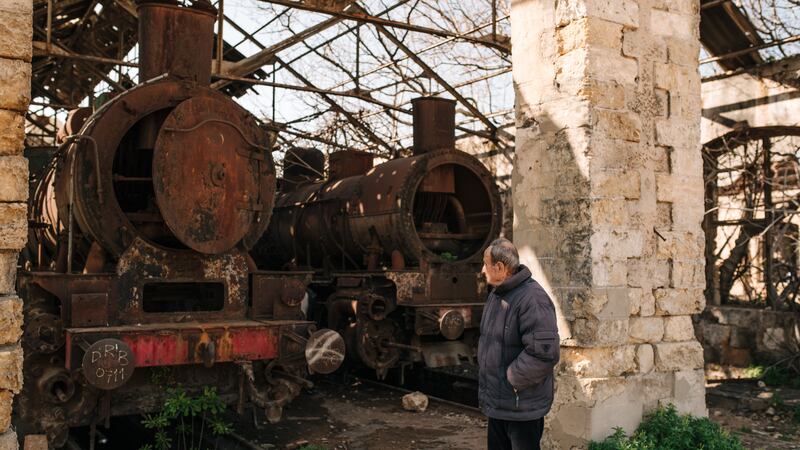Nassif el-Murr looks at a small, decrepit building to his left. Through crumbling cement and broken stones, wildflowers have begun to bloom. Trivial notes vandalize the remaining interior walls: Tarek was here, Nour loves Ahmed.
But for 92-year-old Murr, the building he sees takes on a very different life, one that still lives in the past.
“This used to be the administrative building,” he tells me. “The manager had an office on the second floor.”
Walking through the now-decaying railway station of north Lebanon’s Tripoli, Murr takes me through a time-capsule to another Lebanon—one where a railway transported goods through two world wars, where the luxurious Orient Express moved passengers between Europe and Asia.

The defunct stations, weed-covered tracks, abandoned carts and locomotives scattered throughout the country make up the lingering ghost of a former railway, a Lebanon of yesteryear.
“Everything was different then,” he reminisces, “you can’t compare it to today.”
Born in east Lebanon’s Rayek in 1927, Murr did grow up in an entirely different country. At the time, Lebanon had yet to receive its independence, operating under the French mandate. Murr’s father was the first in the family to work on the railway. First, he was stationed in Syria’s Homs, also under the French mandate at the time, then back to Lebanon at the Tripoli station.
Want more Daily Beast travel stories? Sign up for our weekly newsletter here!
“I started working on the railway like my father in 1945,” Murr says.
“The first few years, I was an assistant helping maintain the trains and repairing them. Later, I became a conductor and drove freight trains until we finally had to shut down during the civil war.”
While remnants of the railway technically belong to the state, few stations are guarded or fenced off. With barely an attempt to seal the relics off from the public, many have become playgrounds for bored teens, history buffs, and curious passersby with unobstructed access to 20th-century antiques.
After walking with Murr for several minutes, a young couple dressed for marriage arrive with a photographer.
“I guess people are taking their engagement photos here now,” he laughs.
According to Eddie Choueiry, researcher and author of Liban Sur Rail (Lebanon on Rail), the first line in Lebanon finished construction in 1895 under the Ottoman Empire. The Ottoman Economic Railway of Beirut, Damascus, and Hama ran through current day Lebanon and Syria transporting goods.
“They wanted to connect Damascus to Beirut, because Beirut was a major port and at the time, Syria was the bank for wheat, seeds, and supplies, ” Choueiry tells The Daily Beast.
“From Damascus, the route to other Mediterranean countries by land was not easy, and the roads were full of bandits, so a railway was finally established.”
By 1942, the fourth and last railway was completed and in service connecting Lebanon to both Syria and Palestine.
Today, the marks of the Ottomans are preserved through the railway’s architecture. East Lebanon’s Riyak is home to one of the largest stations in the countries with clear Ottoman flair despite decades of neglect.

Tripoli, a port city in northern Lebanon, served as the terminus for the famed Orient Express—a long-distance passenger train connecting London to Paris and Istanbul.
“It stopped in Tripoli once a week,” Murr remembers about the Orient Express. “There were many Europeans who came on the [Orient Express.] There were women, children and families on the train coming to Tripoli to go to Beirut.”
While Murr never drove the Orient Express, he recalls the lavish interiors and restaurants on board to serve its riders.
“It was lovely,” he says walking by rusting locomotives, one predating World War I.
In Lebanon, the railway fell victim to the violence of the country’s brutal civil war from 1975 to 1990. Lebanon’s main religious groups (Sunni, Shia Muslims, Christians, and Druze) were pit against one another alongside growing instability as Palestinian refugees began to militarize following the relocation of the Palestinian Liberation Organization to Lebanon.
“Many of the trains in Tripoli used to transport oil from the refinery just a few kilometers from the station,” Murr says. “Around 1983, they were targets for the different militias. Trains were shot at, and we had to stop.”
The Tripoli refinery which brought in oil from a pipeline from Iraq stopped services in the early ’80s. While Murr can’t recall his last day on the railway, he does remember when Syrian troops slowly began taking over stations around the country.

“When we moved out, they came in and started looting the trains for metal scrap and parts to sell,” he says, pointing to missing pieces in various locomotives.
At the onset of the Lebanese civil war, Syrian troops entered Lebanon as a “peacekeeping” forces clashing with Palestinians and Lebanese alike. Their arrival, however, was not welcomed by all and quickly took the form of a military and economic occupation for nearly 30 years.
“At the end of the occupation, the railways were left in a state of total inoperation,” Nabil Doumani, vice president at Train/Train Lebanon tells The Daily Beast.
The local NGO has long advocated for the rehabilitation of the railway and its cultural preservation.
“Moreover, any archives in the stations were destroyed. When the Syrians had left, they burned many of the files. It’s unclear as to why.”
Doumani, who works closely with the Ministry of Public Works and Transport, and the Railway and Public Transportation Authority, has faith that Lebanon’s railway will soon be rehabilitated.
The country’s daily gridlock traffic, for one, has caused a major headache for its residents. Moving from the west-end to east-end of Beirut about 5.5 miles apart can take over an hour during rush hour.
For residents, traffic is a major obstruction to quality of life. For tourists, it’s a deterrent from exploring the country. Just over a year ago, the French government hosted an international economic conference designed to support Lebanon, the world’s third most indebted country, in its development and reforms. About $11 billion aid in the form of grants and loans were promised to Lebanon if the government met specific prerequisites,
One included the reformation of the country’s transportation sector, through the introduction of proper public transportation and the rehabilitation of infrastructure.
For Doumani, this is the perfect opportunity to revive the railway. One day, he hopes out loud, Lebanon can be re-connected to Europe offering an alternative mode of transport in and out of the Levant.

In a brief comment to The Daily Beast, Ziad Nasr, head of the Railway and Public Transportation Authority in Lebanon said that Prime Minister Saad Hariri had promised to review the budge’s commitment to rehabilitate the railway.
“Our interest is to allocate the money properly. We know that there has been an interest to opening the borders with Syria for trade, so we’re hoping that enough attention will be paid to a line from Beirut to Tripoli, that would be able to go to Syria.”
However, others are not as optimistic that significant changes will come.
“I can tell you this. We have been doing a lot of projects to push Lebanon to get on rails for years,” Choueiry begins.
“In Lebanon, you have to get everyone on board for something to happen: the president, prime minister and the speaker. The problem there is we don’t have enough political will. There are a lot of projects, lots of promises, a lot of good intentions, but it’s not enough.”






